When a recipe calls for basil and dill, do you reach for the spice rack? This summer, find out why the best cooks go to the garden instead. Their distinctive flavors and aromas enhance summer's produce as dried, store-bought herbs never could. If you're hesitant about new flavors, start with a little less than a recipe indicates. If your an aficionado, lavish summer fare with herbs to your heart's content. Here are just a few of the fresh herb-flavored recipes you'll find on VegKitchen:
- Chickpea Salad with Zucchini, Vegan Mozzarella, and Basil
- Angel Hair Pasta with Fresh Tomato and Basil Sauce
- Soba Noodles with Tofu, Tomatoes, and Basil
- Dilled Millet and Vegetable Salad
- Dilled Chickpea Salad
- Cauliflower with Parsley-Pecan Breadcrumbs
- Warm Potato and Fennel Salad with Parsley Sauce
- Parley Salad or Veggie Dressing
- Zucchini with Mint
- Minted Apricot Chutney
- Tofu Scramble with Jalapeño and Cilantro
- Cilantro-Lime Dressing
- Tomato Relish Salad with Fresh Oregano and Thyme
...And use the search tool on VegKitchen to find many more recipes featuring, basil, parsely, dill, oregano, cilantro, and other fresh herbs.
Whether you grow your own herbs or buy them, here is a harvest of tips and recipes that will help you savor their flavors all season long.
Growing your own
Whether you're a seasoned gardener with a green thumb or an amateur who's all thumbs, an herb garden—even a miniature one located in a windowsill—will reward you with abundant culinary pleasures. Tiny nursery plants started in the garden even in mid-June can yield lush results by midsummer.
A first-time herb gardener would do well to choose a handful of the most common culinary herbs: parsley, dill, basil, a mint, oregano, thyme, and rosemary.
Most herbs thrive in common garden soil in a sunny spot. They need little care or maintainance apart from watering. And they can just as easily be grown iin pots and kept on a sunny porch, patio, or windowsill. One caveat— Plant mints in a separate pot (to contain their roots) before sinking them into your garden's soil—they are very invasive and can take over a garden within a couple of years. Here's a nice, concise article on starting herbs indoors from seed, then moving them outdoors, on Oregon Live.
Harvesting Garden Herbs
Harvesting your own herbs can be as simple as growing them, with just a few tips: Herbs are at their peak of flavor just before they flower. You can prolong this peak by nipping off the flower buds. Harvest herb leaves that look tender and plump. Herbal wisdom has it that the best time to pick garden herbs is just after the morning dew has dried, as it's then that the plant's essential oils are most concentrated.
Buying Fresh Herbs
At produce stands or supermarkets, use the same tools for buying fresh herbs as you would for other fresh produce—your eyes and your sense of smell. They will tell you if the herbs are fresh. The leaves should be plump, uniform in color, shiny (but not waxy) and not wilted or blemished. The aroma should be fresh and stimulating.
Cooking Tips
• Wash herbs well. Soil particles hide in crevices and leaf centers. Even a few granules of dirt can spoil a delicate dish. For large bunches of herbs, bathe the leaves in a bowl of cool water, then dry them well on paper towels before using (a salad spinner is excellent for this purpose).
• Add fresh herbs near the end of cooking time. Unlike dried herbs, which are best added to cooked dishes early on, the flavors of fresh herbs stand out best when just picked and barely cooked.
• To adapt recipes calling for dried herbs, use as much as three times the amount of fresh herbs. For example, if a recipe calls for one teaspoon of dried oregano, use one table spoon fresh. Of course, this rule of thumb can and should be tailored to individual taste.
Storage
Refrigeration: If you buy bunches of fresh herbs at a market or plan to refrigerate your garden-grown herbs, keep each variety in a separate airtight container lined with paper towels. The herbs will keep for several days in the refrigerator, but the sooner they are used, the better they will taste.
Freezing: Herbs will keep for several months in the freezer. Leaves from larger-leafed herbs like basil and sage should be removed from their stems, while tiny-leafed herbs like thyme and dill may be frozen while still on the stem. Wash and dry the herbs, then store individual varieties in sealed plastic bags or small freezer containers, labeled and dated.
Frozen herbs often become limp or rubbery, so use them in dishes that call for some simmering, like soups or pasta sauces.
- Get more by visiting VegKitchen’s Seasonal Produce Guides.
- For lots more features on healthy lifestyle, please explore VegKitchen’s Healthy Vegan Kitchen page.


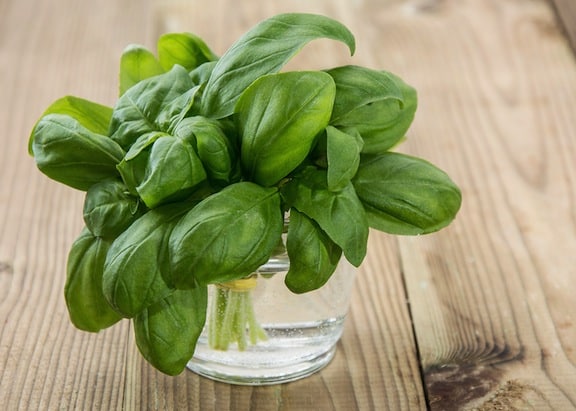
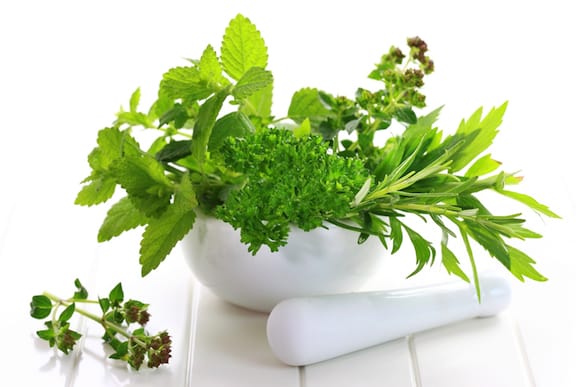
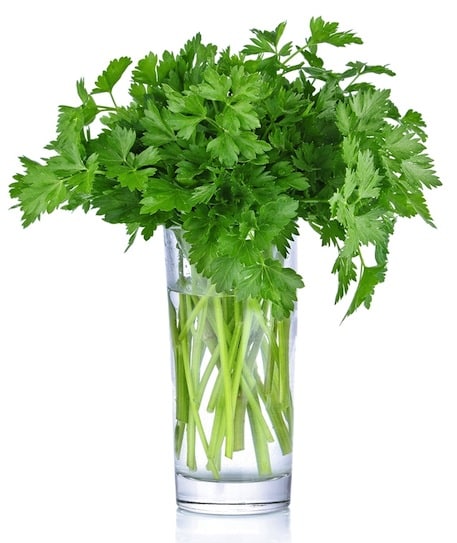
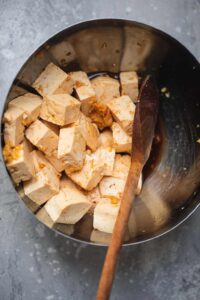

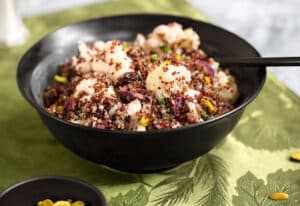

Veggie V! @Veggie V's Vegan Adventure says
Thanks for this! I never know how to keep my fresh herbs fresh. And I can always use more herb friendly recipes! Sometimes the bunches are just so big, I don't know how to use them all up before they go bad. But now, I can either store them correctly for later use or try a new recipe. Thanks again 🙂
Florence Upham says
Lovely and very informational post!My sister just started growing a small herb garden and I'm sure she'll be very glad to read all these good ideas and suggestions. I'm definitely recommending your post to her and to some friends too. Thank you for sharing!